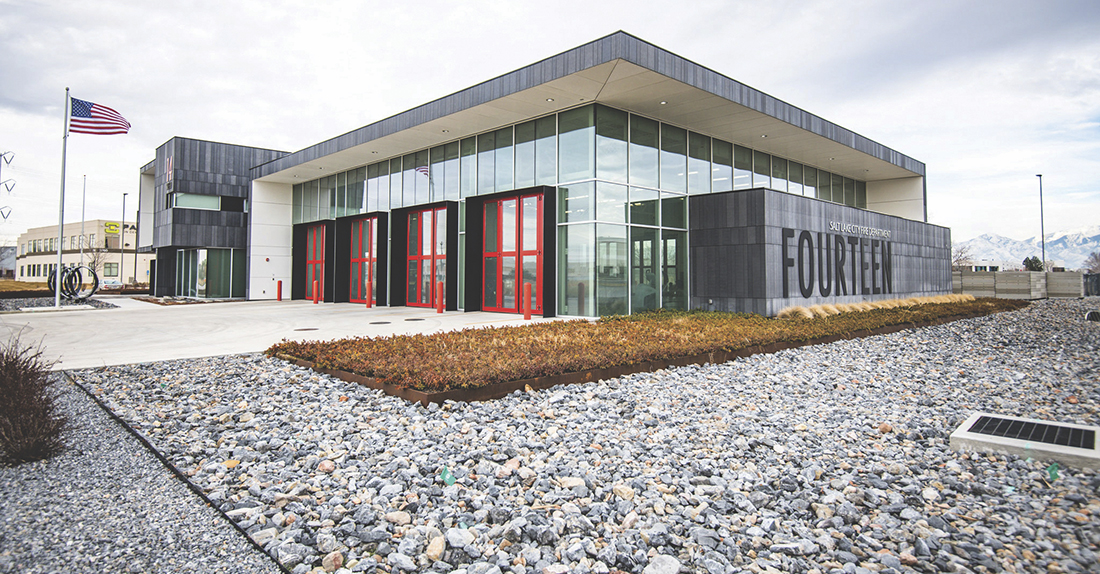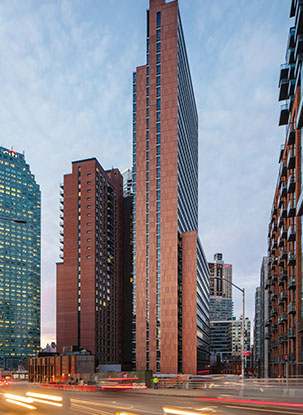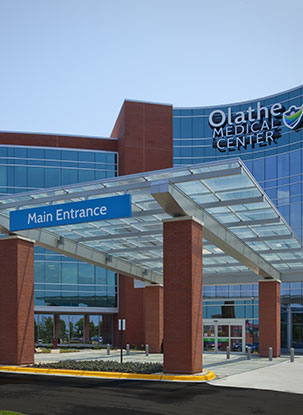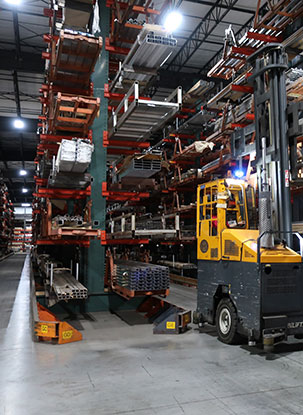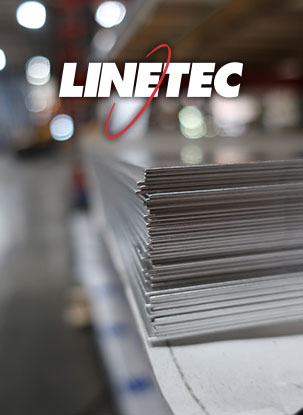 Wausau, Wisconsin (Jan. 2018) – The University of Washington’s newly opened Nano Engineering and Sciences Building (NanoES) provides modern performance and visual continuity with the adjacent Molecular Engineering and Sciences Building. Demonstrating its energy-efficiency and daylight-focused design, the project is pursuing LEED® Silver certification through the U.S. Green Building Council.
Wausau, Wisconsin (Jan. 2018) – The University of Washington’s newly opened Nano Engineering and Sciences Building (NanoES) provides modern performance and visual continuity with the adjacent Molecular Engineering and Sciences Building. Demonstrating its energy-efficiency and daylight-focused design, the project is pursuing LEED® Silver certification through the U.S. Green Building Council.
The $53 million dollar NanoES fulfills the second phase of a 168,000-square-foot complex located at the center of the University of Washington (UW) Seattle-based campus. The first phase, the 90,000-square-foot Molecular Engineering and Sciences Building (MolES), was completed in 2012. Linetec finished multiple aluminum components on NanoES to match the neighboring MolES building, creating the desired continuity within the UW campus.
The Seattle offices of Zimmer Gunsul Frasca Architects LLP (ZGF) designed the MolES building and sought to achieve the same aesthetic for the NanoES building. However, new, higher performance requirements in local building and energy codes meant that upgraded curtainwall, window and entrance systems were needed for the NanoES building.
Distinctive, enduring appearance
 Meeting the project’s specified performance, appearance and durability, Linetec provided the finishing and thermal improvement services for Wausau Window and Wall Systems’ curtainwall and window systems, for Tubelite Inc.’s entrance systems, as well as for the shadow boxes, the sun shades and the accent fins.
Meeting the project’s specified performance, appearance and durability, Linetec provided the finishing and thermal improvement services for Wausau Window and Wall Systems’ curtainwall and window systems, for Tubelite Inc.’s entrance systems, as well as for the shadow boxes, the sun shades and the accent fins.
For the majority of these architectural aluminum products, Linetec applied a Silver Shadow color as a two-coat mica finish under stringent factory-controlled processes. This 70 percent polyvinylidene fluoride (PVDF) resin-based liquid paint meets the American Architectural Manufacturers Association’s (AAMA) 2605 industry standard for high-performance coatings on buildings’ exteriors. Coatings meeting this standard exhibit outstanding resistance to humidity, color change, chalk, gloss loss and chemicals.
Linetec utilizes a multi-step pretreatment, application and curing process, using advanced techniques and equipment to ensure quality and uniformity in all paint projects. As a recognized environmentally responsible finisher, Linetec captures the liquid paints’ volatile organic compounds (VOCs) content using a 100 percent air capture system and safely destroys the VOCs with a regenerative thermal oxidizer. Linetec then reuses its heat energy byproduct to improve process energy efficiency. This process of reuse is completed before the material exits the paint line.
Durable, recyclable material choices on UW NanoES also support its sustainability goals and minimize the buildings’ maintenance costs, while providing long lifecycles. The aluminum used to produce the curtainwall and window systems is made from a high recycled-content billet composition and can be recycled again at the end of its useful life on the building.
Transparency, daylight, energy-efficiency
The NanoES building, like the adjacent MolES building, features four stories above grade and one story below. The second through fourth floors of the NanoES Building are programmed research laboratory spaces. Two active learning classrooms, one large and one small, and those classrooms’ supporting breakout spaces comprise the first floor of the NanoES building. Also on the NanoES building’s first floor is a shared, informal learning center that students can use both before and after classroom sessions.
 “Transparency, access to daylight and openness were high priorities,” said Wausau’s Northwest Territory manager Brad Glauser. Daylight flows deeply into the building’s interior as its laboratories and offices are separated with glass walls and doors that also maintain a visual connection between these spaces.
“Transparency, access to daylight and openness were high priorities,” said Wausau’s Northwest Territory manager Brad Glauser. Daylight flows deeply into the building’s interior as its laboratories and offices are separated with glass walls and doors that also maintain a visual connection between these spaces.
Energy efficiency also was an essential part of achieving LEED certification for NanoES. Contributing to this, Linetec provided the thermal improvement services for the curtainwall and entrance systems. Wausau’s curtainwall features insulating, thermal, polyamide strut to separate the inside and outside aluminum framing members, which reduces the amount of heat transfer, therefore helping save energy and increase occupant comfort.
Further enhancing energy efficiency, occupant comfort and daylighting design principles, both the windows and curtainwall lites incorporate Viracon’s VNE-63 solar-control, RoomSide™ Low-E, argon-filled, insulating glass. The low-e, interior surface coating works by reflecting indoor heat back into the room and improving thermal efficiency. In the offices, the windows also are programmed to automatically open at night to provide natural ventilation and lessen the energy load demands on the HVAC system.
Charrette-driven design assistance
 To develop the resulting best approach for the building envelope of NanoES, glazing contractor Herzog Glass worked with Wausau’s Design Assist Team to facilitate a three-day series of design charrettes. According to Glauser, these intense, early planning sessions brought together representatives from the University of Washington, ZGF, Hoffmann Construction Company and Herzog Glass.
To develop the resulting best approach for the building envelope of NanoES, glazing contractor Herzog Glass worked with Wausau’s Design Assist Team to facilitate a three-day series of design charrettes. According to Glauser, these intense, early planning sessions brought together representatives from the University of Washington, ZGF, Hoffmann Construction Company and Herzog Glass.
Glauser emphasized that the initial coordination, especially with Herzog Glass, was paramount to the success of the project. He noted, “We needed to work together to implement project-specific means and methods to ensure proper and safe installation, on a postage stamp size of a construction site that allowed almost no room for staging and critical equipment.”
In total, Herzog Glass installed more than 22,000-square-feet of Wausau’s unitized curtainwall on UW NanoES. The majority is INvision™ 8250i-HRX Series 4-SSG curtainwall with custom, 6-inch-deep aluminum fins at vertical members. Integrated within the curtainwall are Wausau 4250z Series zero sightline, project-out awning windows with both manual and motorized operators.
Complementing the high-performance curtainwall and window systems, Herzog also installed:
- Wausau’s ClearStory™ 24-inch-deep exterior sun shades, which help intercept unwanted solar heat gain before it can impact a building’s HVAC system’s load and economize natural light by redirecting it inside the building.
- Wausau’s customized shadow boxes, which are similar to those on MolES to add visual depth.
- Wausau’s structurally glazed, unitized handrail systems integrated directly in plane with the INvision curtainwall, installed on the building’s wall parapet and green roof.
- Tubelite’s Therml=Block® entrances with thermal strut, customized electric security and automatic hardware.
Success story, strong partnerships
 Ron Dunham of Herzog Glass agreed that working together with Wausau at the front end of the project benefited everyone. He said, “As it was an addition to an existing facility, we needed to match the MolES building’s system’s look as closely as possible.”
Ron Dunham of Herzog Glass agreed that working together with Wausau at the front end of the project benefited everyone. He said, “As it was an addition to an existing facility, we needed to match the MolES building’s system’s look as closely as possible.”
Hoffman Construction Company’s project manager, Bob Vincent added, “It turned out great. The client is very pleased. It looks like an extension of MolES, just as they wanted.”
“The combination of durably finished, 4-SSG unitized curtainwall and high-performance glass achieved UW’s requirements,” summarized Glauser. “We exceeded the national forerunning Seattle Energy Codes, as well as UW’s energy-efficiency goals with low solar heat gain coefficient, low U-Factor and high condensation resistance. At the same time, high visible light transmittance was maintained, providing occupants with access to daylight, a transparent connection to views and interior comfort. We stayed ahead of schedule and within budget. In my book, this definitely is a success story.”
Elaborating on this success in the Daily Journal of Commerce, ZGF’s associate partner Nicole Cooper, AIA, concluded, “The strong partnership between UW and the design team, as well as a commitment to sustainability, brings the Molecular Engineering and Sciences Building and the Nano Engineering and Sciences Building together to create one high-performance building that fosters a collaborative research environment for years to come.”
**
University of Washington, College of Engineering, Nano Engineering and Sciences Building,
3946 West Stevens Way NE, Seattle, WA 98105; https://www.engr.washington.edu
- Owner: University of Washington, Capital Projects Office; Seattle; https://cpd.uw.edu/projects
- Architect: Zimmer Gunsul Frasca Architects LLP (ZGF), Seattle; https://www.zgf.com
- General contractor/construction manager: Hoffman Construction Company of Washington; Seattle; http://www.hoffmancorp.com
- Glazing contractor: Herzog Glass, Inc.; Seattle; https://www.herzogglass.com
- Glazing systems – glass fabricator: Viracon; Owatonna, Minnesota; http://www.viracon.com
- Glazing, entrance and shading systems – finisher: Linetec; Wausau, Wisconsin; https://linetec.com
- Entrance systems – manufacturer: Tubelite Inc.; Walker, Michigan; http://www.tubeliteinc.com
- Glazing and shading systems – manufacturer: Wausau Window and Wall Systems; Wausau, Wisconsin; http://www.wausauwindow.com
- Photos by: Aaron Leitz Photography, courtesy of ZGF
Located in Wisconsin, Linetec serves customers across the country, finishing such products as aluminum windows, wall systems, doors, hardware and other architectural metal components, as well as automotive, marine and manufactured consumer goods. The company is a subsidiary of Apogee Enterprises, Inc. (NASDAQ: APOG).
Linetec is a member of the Aluminum Anodizers Council (AAC), the American Architectural Manufacturers Association (AAMA), the American Institute of Architects (AIA), the Association of Licensed Architects (ALA), the National Glass Association/Glass Association of North America (NGA/GANA), the U.S. Green Building Council (USGBC) and the Window and Door Manufacturers Association (WDMA).
